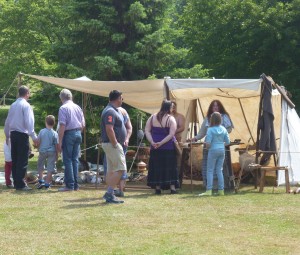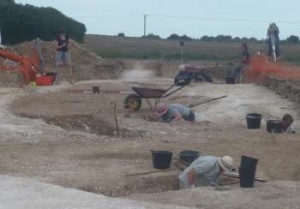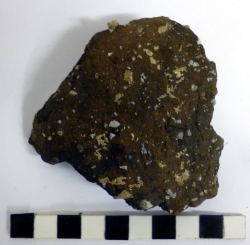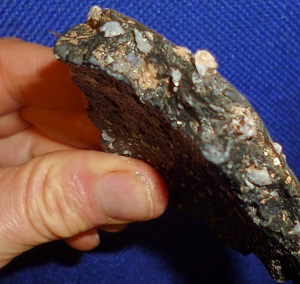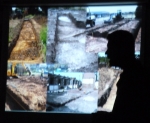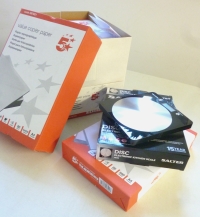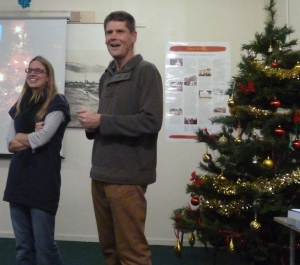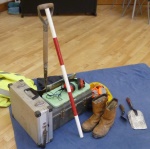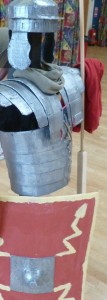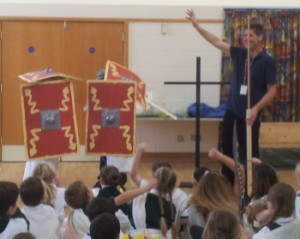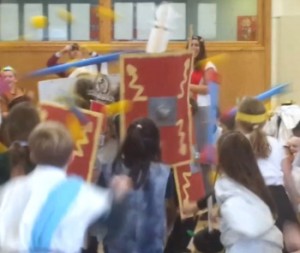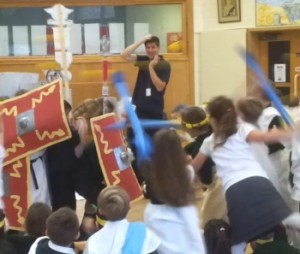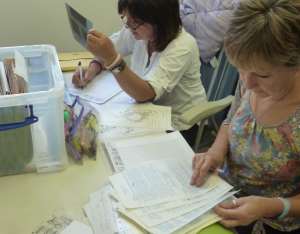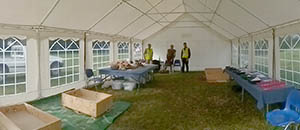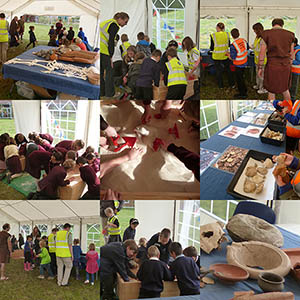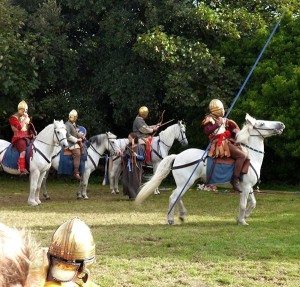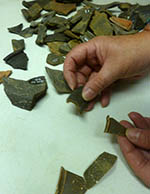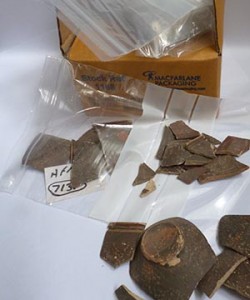Book review – Signals of Belief in Early England
An interesting collection of studies has been added to the Anglo-Saxon section of the Trust’s archaeological library.
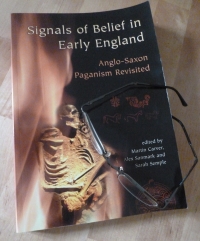
Edited by professor Martin Carver, Alex Sanmark and Sarah Semple, Signalsof Belief explores the history and character of ‘pagan’ Anglo-Saxon belief before and after Christian ideas began to spread after Augustine’s mission to covert the English arrived in 597 AD, The subject is significant to the archaeology of Thanet because of the number of important Anglo-Saxon cemeteries located on our chalk downland landscape. The Island would have been an important cultural community, linking the ideas of the people of north Germany and Scandinavia with what remained of the Roman world in Britain and on the continent.
Of course, Augustine’s mission sent by Pope Gregory the Great to convert the Anglo-Saxon kingdoms was one of the most significant events in the story of ideas and beliefs in the Anglo-Saxon period and, the 8th century historian Bede tells us, the first connections between the two cultures took place somewhere in Thanet.
Although Bede gives us a general account of the progress of Christian ideas through the Anglo-Saxon Kingdoms based on contemporary accounts, starting with the great King of Kent Aethelbert, we know little more than hints and glimpses of the beliefs held by the Anglo-Saxon people Augustine met.
What were their beliefs about life and death and what lay beyond the material world that held before the ideas of Christianity entered the culture so strongly? It is hard to discover because little pre-Christian written evidence survives that allows us to enter the minds of the people, and we can only examine the possible answers from the records left by observers from the outside.
In eight essays, Signals of Belief examines the hints given by contemporary Christian observers of the culture they met with in England and the clues that can be extracted from archaeological evidence and contemporary artistic representation. The essays look at the light that can be cast by poetry and other literary works and later documentation that discusses the beliefs of people of the German and Scandinavian lands where the Saxon English drew part of their ancestry. However most of this literary evidence all comes from a later period and has to be distilled by the writers into themes that they try to recognise in the early Saxon culture that are revealed by archaeological studies of the art and artefacts of the Anglo-Saxons.
There are attempts in some essays to take the hints and fit them with anthropological understandings of Shamanism and magical practise of some of the people of Scandinavia and Siberia. The book contains a useful discussion of how the ideas of Historians and archaeologists about the date and nature of Anglo-Saxons has developed over time, from the 16th to the 20th century, as they realised that the period after the Roman Empire and before the better known history of the later Medieval period had to be examined and researched using new ideas on the lifestyles and beliefs of the period.
Some of these attempts at projection, and conjectural reconstruction, are more convincing than others. A few pieces use a complicated style of language to say some fairly simple things; the Saxons used Horse imagery extensively; their halls may have had a religious as well as political role; they believed that all the things around them had some form of spiritual character. However some of the signals are louder than others, it is striking and important to Thanet’s archaeological and historical record that the ancient burial mounds of prehistory remained significant places to the Anglo-Saxons. However, a later writer warns that some of the anthropological ideas applied to the problem are spread so thinly as to have lost their significance.
In an afterword, the well-known historian of cultural beliefs Ronald Hutton warns that while the essays point the way to undertstanding the beliefs of the Anglo-Saxons, without new evidence we can never really know the internal world of their ideas. Using a telling analogy he compares the search to trying to find out the contents of a tin with no label. The discussions in the book are edging closer to a better description of the size and shape of the container, which could tell us something about the contents, but we do not have the tools to open the tin and really get to the inner contents. A lesson that applies to many historical periods that are known only through archaeological remains.
This book is not an easy read, the academic style of some of the pieces is quite dense, but it is an essential work for anyone who wants to explore in depth the inner life of the one of the population of one of the most important periods represented in Thanet’s archaeological record. Despite the dense texture the content is though provoking and stimulating and worth working through.
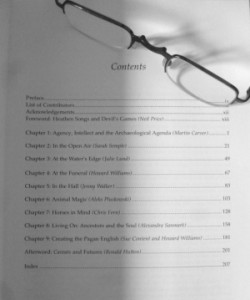
In the foreword Professor Martin Carver provides a coherent summary of the problems of understanding Anglo-Saxon mentalities from archaeological data and a good overview of the ideas that might lead to solutions, as well as adding insightful comments of his own. Ronald Hutton’s afterword brackets the essays with his warning on the potential limits of our knowledge and the potential of the research which is a sobering round off to the wide ranging content of the book.
Carver, M., Sanmark A., Semple S. (eds), 2010. Signals of Belief in Early England, Anglo-Saxon Paganism Revisited. Oxbow Books. Oxford.
Reading more about Anglo-Saxon Thanet
There’s a useful overview of Thanet’s Anglo-Saxon archaeology on our Virtual Museum website and wider overview in Ges Moody’s book The Isle of Thanet from Prehistory to the Norman Conquest. The landing of Augustine in Thanet and the effect on the contemporary Anglo-Saxon culture of Thanet is dealt with in depth in St Augustine’s First Footfall, also by Ges Moody and published by the Trust for Thanet Archaeology.

